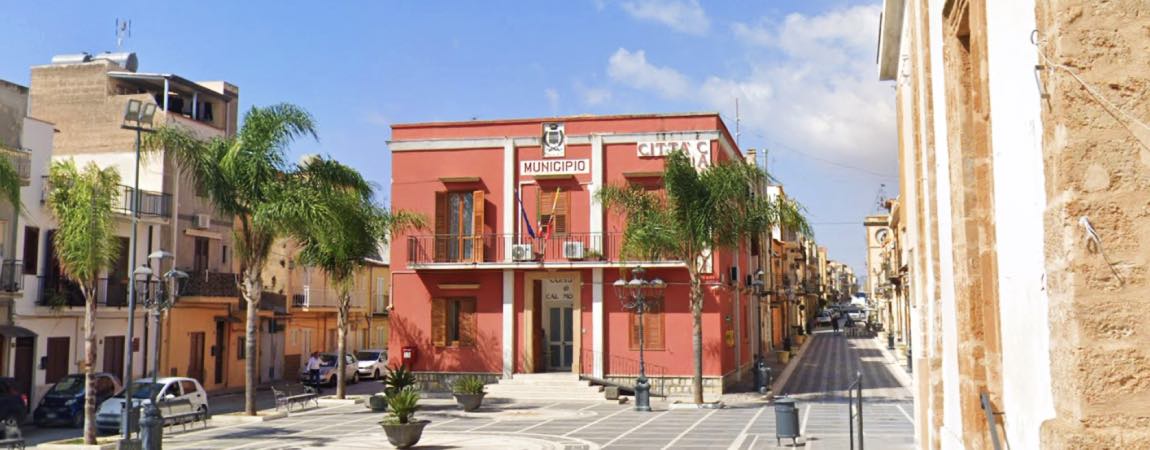
Calamonaci is a town in the province of Agrigento which has a particular history, partly linked to its coat of arms, the result of various dominations.
Calamonaci is a small village in the province of Agrigento which has a particular history, partly linked to its coat of arms. Deciding to visit it could be a good idea to discover, alley after alley, the history of this place which over the centuries has been subject to various dominations and whose history is closely linked to the noble families of the time. Here, then, is all there is to know about the history, the coat of arms and information about Calamonaci.
The history of Calamonaci
The history of Calamonaci has very distant roots and from the name itself we understand that its foundation is due to the work of the Arabs. In fact, the name comes from the expression Kal at Munach, i.e. rest house, given that probably in ancient times the town was above all a rest station for horses and a supply station for the caravans.
According to some historical findings, including the necropolis found in the Cozzu di lu medicu district, it was the Arabs who founded the community in Thirteenth century, then the territory began to pass from hand to hand between the various local noble families, somehow marking the celebration of the town.
In 1287, at the behest of the king James of Aragon, the territory was given as a dowry to the Count of Caltabellotta, born Berengar de Villaragut, who however remained only a few years and then left the island, so much so that as soon as 1296 Frederick II decided to give it to another Berengar, this time that of de Spuches.
From this moment on, through a series of marriages, the territory passed from one dynasty to another, without ever being populated. Only in 1574 did Antonino de Termini ask for and obtain from Charles of Aragon the so-called populous licence, that is the permission to populate the village, and so little by little Calamonaci came to life: in 1600, for example, 650 inhabitants were registered. The village continued to pass from family to family until, in 1812 when feudalism was abolished, Calamonaci managed to transform itself into an autonomous municipality.
Coat of arms and information about Calamonaci
Those who want to know the coat of arms and information about Calamonaci will notice the particularity of heraldry from the first glance. In fact, what is today coat of arms of Calamonaci it is based on some elements that probably in the past had belonged to coats of arms that distinguished the different noble families who owned the village.
In fact, inside you can admire a crown, symbol of the feudal bond, e three green hills, which instead are the stylized representation of the hills on which the village stands. In the official description of the coat of arms, contained in the Presidential Decree of 17 May 1975, one can read this description: "blue, with the twin in a silver band, accompanied by an Italian-style mountain of three green peaks, moving from the tip .”
What to see in Calamonaci
People who decide to visit Calamonaci will be able to discover an area rich in many interesting elements, a real immersion in the history and culture of the place which, as can be seen from its history, is complex, articulated and therefore even more fascinating .
Certainly the structure that most represents the community is the Mother Church, a beautiful Romanesque style building which was built in the early nineteenth century and which is richly decorated inside. In addition, the so-called is also worth a visit Calvary, a road that leads to the highest point of the town and which has the particularity of having been entirely built with stone slabs that come from Jerusalem.
The place known as Belvedere, then, is the most panoramic point of Calamonaci: an open space from which it is possible to see the entire valley that extends at the foot of the village. It dates back to 1902, however, the great watch which was placed at the confluence of Via Crispi and Corso Garibaldi: it is a point of reference for the entire citizenry as well as being a focal point during the folk festivals that take place in the village every year. From there you can easily reach Piazza San Vincenzo Ferreri which stands out from all the others for its beautiful mosaic flooring by the contemporary artist Vito Russo.
How to reach Calamonaci
To reach Calamonaci the most convenient way is certainly your own auto. In particular, for those coming from Palermo or from Trapani, the reference highway is the A29, with exit at Castelvetrano Sud in the first case and Mazara del Vallo in the second. Then continue on SS115 up to destination.
From Catania, on the other hand, the motorway is theA9 with Ribera exit and then continue on the SS386 until reaching Calamonaci. From Palermo and Agrigento, then, a service is active local buses which also stop here, while those who prefer the train will have to use the Porto Empedocle station as a reference point from which, then, continue by bus to Calamonaci.









